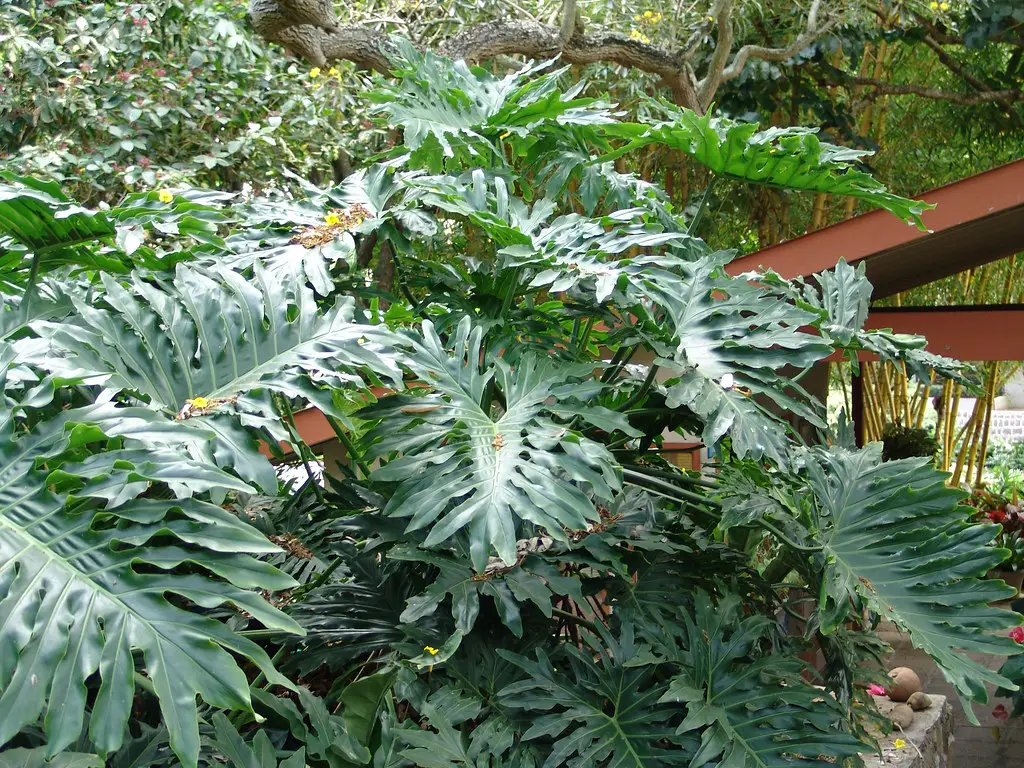The Philodendron Selloum, also known as the Tree Philodendron, is renowned for its large, tropical leaves that can give a striking, lush appearance to any space. With its magnificent foliage, this plant has been a beloved houseplant for many decades and is also used extensively in landscape design.
A member of the Philodendron genus, this plant features deeply lobed, evergreen leaves that can grow up to 3 feet long. The glossy, dark green leaves make it an attractive plant for both indoor and outdoor environments, and its unique shape can add texture and visual interest.
Native to South America, particularly in the regions of Brazil and Paraguay, Philodendron Selloum has adapted well to cultivation in various parts of the world. It is relatively easy to care for, making it suitable for both novice and experienced gardeners. Its beauty and low-maintenance needs have solidified its popularity among plant enthusiasts.
| Aspect | Details |
|---|---|
| Common Names | Tree Philodendron, Lacy Tree Philodendron, Hope Plant |
| Botanical Name | Philodendron bipinnatifidum (synonym Philodendron selloum) |
| Family | Araceae |
| Plant Type | Evergreen Shrub |
| Mature Size | 8-10 feet tall |
| Sun Exposure | Partial Shade |
| Soil Type | Well-Draining, Peaty Soil |
| Hardiness Zones | 9-11 |
| Native Area | South America, primarily Brazil and Paraguay |
Philodendron Selloum Care
Philodendron Selloum is a relatively hardy plant, tolerating various growing conditions. It can thrive both indoors and outdoors, provided it has the right blend of light, water, and nutrients.
While the plant’s care may seem simple, attention to details such as proper soil mixture, adequate watering, and the right amount of sunlight can make a significant difference in its growth and appearance. Following specific care guidelines ensures that this impressive tropical plant remains healthy and vibrant.
Light Requirement for Philodendron Selloum
Philodendron Selloum thrives in bright, indirect light. It can tolerate low light conditions but prefers dappled sunlight when placed outdoors. Direct sunlight may cause leaf burn and should be avoided.
Soil Requirements for Philodendron Selloum
This plant prefers well-draining, peaty soil. A mixture of potting soil with perlite or sand ensures proper drainage and allows the roots to breathe, promoting healthy growth.
Water Requirements for Philodendron Selloum
Watering should be done when the top few inches of the soil feel dry to the touch. Overwatering can cause root rot, so it is crucial to find a balance to keep the soil consistently moist without being soggy.
Temperature and Humidity
Philodendron Selloum enjoys a tropical environment with temperatures ranging from 60-80°F (15-27°C). Humidity levels around 60% are ideal, and this can be achieved through misting or using a humidifier.
Fertilizer
A balanced, water-soluble fertilizer can be applied monthly during the growing season to support the plant’s growth. Reduce or stop fertilizing during the winter months.
Pruning Philodendron Selloum
Pruning can be done to maintain shape or remove dead or yellowing leaves. Regular inspection and trimming enhance the plant’s appearance.
Propagating Philodendron Selloum
Propagation is best done through stem cuttings or by dividing the plant during repotting.
How To Grow Philodendron Selloum From Seed
Growing from seed is less common and can be a slow process. Fresh seeds should be sown in well-draining soil and kept moist and warm.
Common Pests & Plant Diseases
Aphids
Treat with insecticidal soap or neem oil.
Scale
Manual removal or insecticidal sprays can be used.
Common Problems With Philodendron Selloum
Leaf Yellowing
Overwatering or underwatering may cause yellowing. Adjust the watering schedule.
Leggy Growth
Inadequate light may lead to leggy growth. Move the plant to a brighter location.
Pro Tips
- Avoid overwatering to prevent root rot.
- Provide bright, indirect light for the best growth.
- Regularly clean the leaves to remove dust and allow better photosynthesis.
- Be patient, as the plant grows relatively slowly but can become a large, stunning specimen.
- Monitor regularly for pests and diseases.



